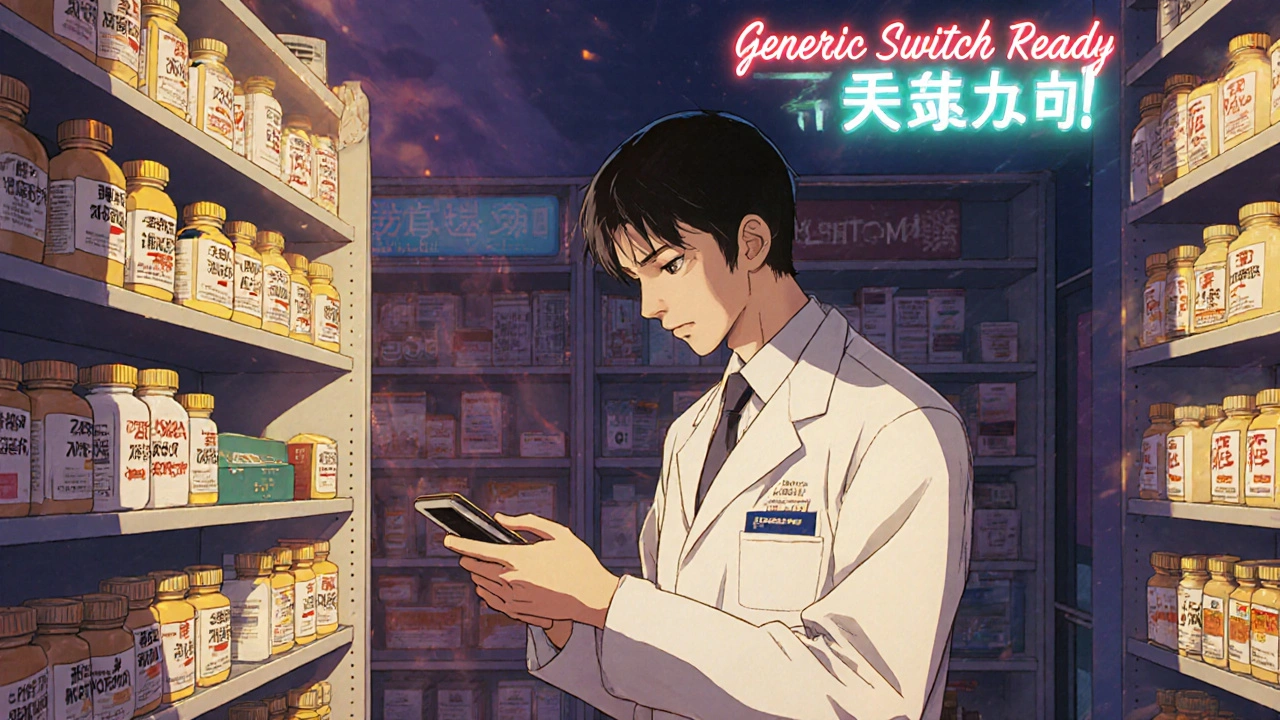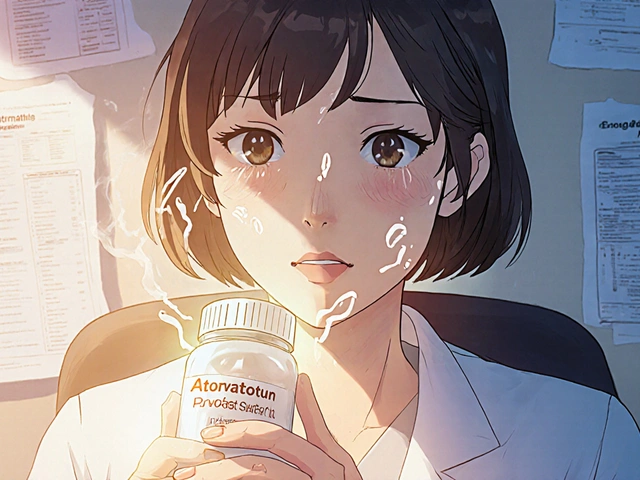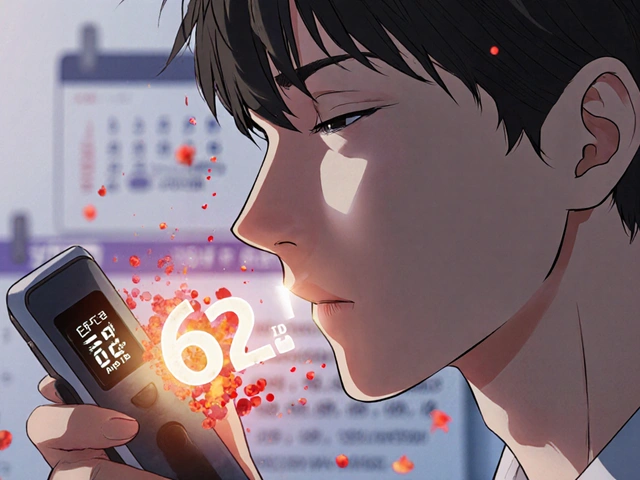Most pharmacies spend 80% of their drug budget on just 20% of the medications they carry. That’s the 80/20 rule in action-and for independent pharmacies, the key to surviving it lies in how they stock generics. Generic drugs make up 90% of all prescriptions filled in the U.S., but only 20% of total spending. That’s a huge opportunity-if you know how to manage it.
Why Generic Stocking Isn’t Just About Saving Money
Generic drugs aren’t cheaper because they’re low quality. They’re cheaper because the patent’s expired, and other manufacturers can produce the same active ingredient. But that doesn’t mean they’re easy to manage. When a new generic hits the market-say, a generic version of atorvastatin-demand for the brand-name version drops fast. If your inventory system doesn’t adjust, you’re stuck with $3,000 worth of expired brand pills gathering dust while patients walk out because you’re out of the generic. The goal isn’t just to buy low. It’s to buy smart. You need to keep enough stock on hand so patients don’t leave empty-handed, but not so much that you’re tying up cash in pills that expire in six months. That balance is where most pharmacies fail.The Minimum-Maximum Method: Simple, But Powerful
The most reliable method for stocking generics is the minimum-maximum system. You set two numbers for each generic drug: the lowest amount you’re willing to let sit on the shelf (minimum), and the highest amount you’ll allow before ordering more (maximum). For example:- Metformin 500mg: Min = 100 tablets, Max = 250 tablets
- Levothyroxine 75mcg: Min = 60 tablets, Max = 150 tablets
- Atorvastatin 20mg: Min = 80 tablets, Max = 200 tablets
Calculating Reorder Points and Quantities
The minimum-maximum system works best when your numbers are based on real data-not gut feeling. Start with the Reorder Point (ROP) formula:ROP = (Average Daily Usage × Lead Time) + Safety Stock
Let’s say you sell 12 tablets of metformin per day. Your supplier takes 5 days to deliver. You want a 3-day safety buffer in case of delays.ROP = (12 × 5) + 36 = 60 + 36 = 96 tablets
That means when you hit 96 tablets left, it’s time to order. Your maximum should be ROP + your typical order size. If you usually order 150 tablets at a time, your max is 96 + 150 = 246. Round it to 250 for simplicity. For Reorder Quantity (ROQ), use the Economic Order Quantity (EOQ) model. It balances ordering cost against storage cost. Most pharmacy software does this automatically if you enter:- Annual usage
- Cost per unit
- Ordering cost per purchase
- Carrying cost per unit per year
Watch Out for Expiry Dates
Generics often come with shorter shelf lives. Why? Because manufacturers compete on price, not packaging. You might get a batch of lisinopril with only 14 months left before expiry, while the brand version had 24. If you don’t track this, you’ll end up with expired stock. Use your inventory system to flag generics with less than 6 months until expiry. Push those to the front of the shelf. Offer them as part of a refill program. Some pharmacies even give a small discount on near-expiry generics to move them faster. One pharmacy in Ohio saved $4,700 in 2023 just by proactively managing expiry dates on their top 15 generic SKUs. That’s not waste-it’s profit recovered.
How to Handle New Generic Launches
When a new generic enters the market, things get messy. The brand-name drug’s sales drop. Your inventory system doesn’t know that yet. You keep ordering the brand. You get stuck with it. The fix? Set up a generic transition protocol.- When a new generic is approved, check your pharmacy’s formulary. Is it covered?
- Call your wholesaler. Ask when the generic will be available and what the price is.
- Adjust your reorder quantity in your system: cut the brand’s order by 75% and set the generic’s order to match your projected demand.
- Track sales daily for the first two weeks. If the generic sells 50 units in week one, don’t assume it’ll sell 50 next week. It might hit 80.
Stock Depth Matters
Patients don’t like walking into a pharmacy and seeing one bottle of metformin on the shelf. They assume it’s out of stock. They leave. Best practice: Keep at least three to four bottles of fast-moving generics on display. That’s not overstocking-it’s psychological assurance. It tells patients, “We’ve got this.” For high-volume generics like ibuprofen, antacids, or levothyroxine, aim for a week’s supply on hand. That’s usually enough to cover refills, weekend demand, and delivery delays. One independent pharmacy in Bristol reduced stockouts by 40% after increasing their stock depth on the top 10 generics from one to three bottles each. Their customer satisfaction scores jumped.Don’t Forget the Human Factor
Software helps, but people make it work. Train your staff to:- Return unclaimed prescriptions to stock within 24 hours
- Check expiry dates when receiving new shipments
- Flag any generic that hasn’t moved in 60 days
- Ask patients if they’re open to switching to a generic if it’s available

Software Is Your Best Friend
Manual spreadsheets won’t cut it anymore. You need inventory software that:- Tracks generic-specific reorder points
- Flags near-expiry stock
- Adjusts for seasonal demand (e.g., more antihistamines in spring)
- Has built-in transition alerts for new generic approvals
What Happens If You Ignore This?
Pharmacies that treat generics like an afterthought end up with:- Stockouts on metformin, lisinopril, or simvastatin-leading to lost sales and angry patients
- Overstocked brand-name drugs that expire before they sell
- Slow cash flow because money is tied up in slow-moving inventory
- Staff burnout from constant manual inventory checks
Start Small. Think Long-Term.
You don’t need to overhaul everything tomorrow. Pick three fast-moving generics-metformin, atorvastatin, and ibuprofen-and set up minimum-maximum levels for them. Track them for 30 days. Adjust based on real sales. Then add three more. Within six months, you’ll have a system that runs itself. You’ll spend less time counting pills. You’ll spend more time helping patients. And that’s what pharmacy inventory management is really about-not numbers on a screen. It’s about making sure the right drug is on the shelf when someone needs it.How often should I update my generic inventory levels?
Update your inventory levels quarterly, or whenever there’s a major change-like a new generic entering the market, a supplier price shift, or a sudden spike in demand. Don’t wait for year-end reviews. Generics move fast. Your system should move faster.
Can I use the same inventory system for brand and generic drugs?
Technically yes, but you shouldn’t. Brand-name drugs have stable demand and long shelf lives. Generics have volatile demand, short shelf lives, and frequent price changes. Your system needs to treat them as separate categories with different rules. Otherwise, you’ll overstock one and understock the other.
What’s the biggest mistake pharmacists make with generic inventory?
Relying on historical data without adjusting for new market shifts. If you keep ordering the same amount of a generic because you sold 100 last month, you’ll be caught off guard when a new competitor enters and demand spikes to 180. Always monitor weekly trends, not monthly averages.
How do I know if a generic is selling well?
Look at your Cost of Goods Sold (COGS) and turnover rate. If a generic has a high turnover (replenished every 2-3 weeks) and low COGS, it’s a winner. If it’s sitting on the shelf for 60+ days with low sales, it’s a candidate for removal or reduced order size.
Should I stock every generic that becomes available?
No. Only stock generics that match your patient population and formulary. If your patients rarely get prescribed a certain generic, don’t waste space on it. Focus on the top 15-20 generics that make up 80% of your volume. Less is more.
Is it worth investing in inventory software?
If you’re managing more than 50 different generic SKUs, yes. Software cuts manual errors, reduces stockouts by up to 40%, and saves 5-10 hours a week in inventory checks. The ROI usually pays for itself in under six months.
Pharmacies that master generic inventory don’t just survive-they thrive. They have more cash flow, fewer expired drugs, happier patients, and less stress. It’s not about having the biggest stock. It’s about having the right stock, at the right time, in the right amount.







